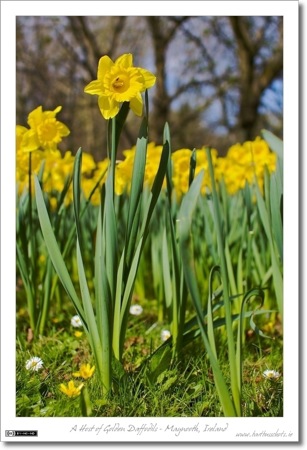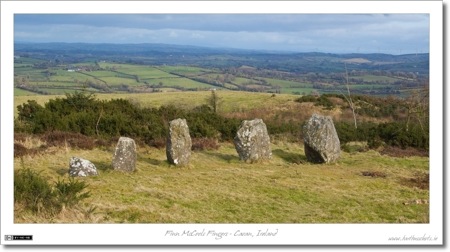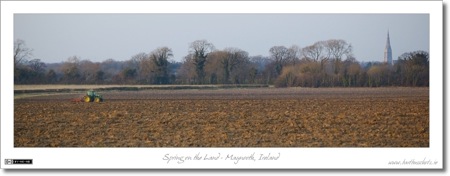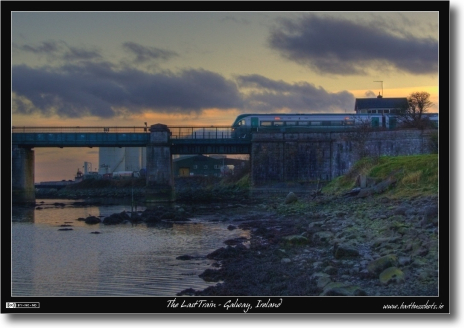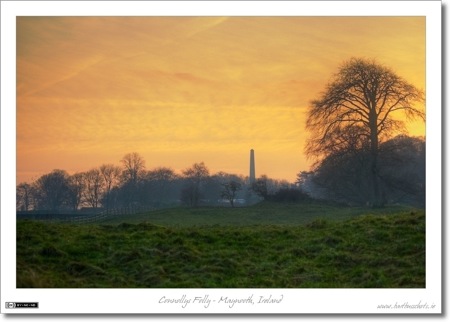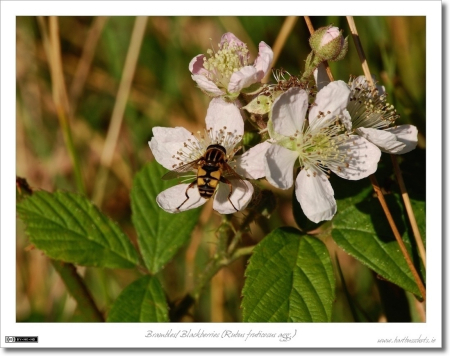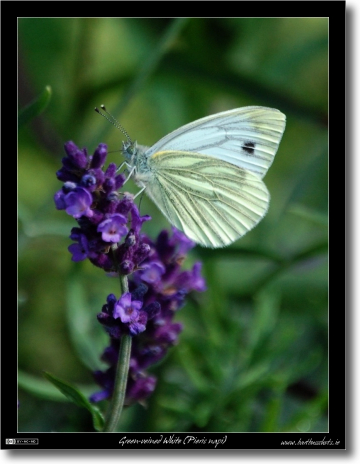May
5
Installing mod_jk for Apache 2.2 on Mac OS X 10.5 Leopard
Filed Under Computers & Tech, System Administration | 17 Comments
Note: these instructions also work on OS X 10.6 Snow Leopard, and OS X 10.7 Lion
A few years ago I did a similar tutorial for installing mod_jk on OS X 10.4 Tiger, but yesterday I discovered that those instructions do not work for Leopard. It took my quite a bit of googling and trial an error, but I’ve found a solution that works, which I’m going to share here. This solution is, in my opinion, a best practices solution, and does not involve any changes to your core apache configuration file (httpd.conf). These instructions are for the default install of Apache 2.2 that comes pre-installed on OS X 10.5 Leopard. I can verify that these instructions work for Tomcat 5.0.30, but I would be 99% sure they should also work un-changed for Tomcat 5.5.X and Tomcat 6.0.X.
Apr
26
I just love Daffodils, and each time I see a clump of them together the words of Wordswoth’s famous poem always spring to mind. As beautiful as a “host” of Daffodils is to look at, I’ve found it really difficult to capture that beauty well with my camera. After much experimentation, I finally got a shot I’m happy with by using a combination of a shallow depth of field, and a very low camera position. This way one Daffodil could be picked out from the crowd, while allowing the rest to form a lovely yellow and green bokeh. The reason for getting down low is to allow the one chosen Daffodil to be raised above the others in the frame, making it stand out even more than a shallow depth of field alone would allow.
- Camera: Nikon D40
- Lens: Sigma EX 30mm F1.4
- Exposure: 1/2500 sec
- Focal Length: 30mm
- Focal Ratio: F2.8
- ISO: 200
- Camera Mode: Aperture Priority
Apr
19
Having been on holidays in Belgium and deprived of internet access last weekend I’m posting two shots at once today. When I post two shots together for what ever reason I like to choose photos that are in some way related. In this case the relationship is cropping. Both are landscape shots that I find have been greatly improved by cropping them to a panoramic aspect ratio.
The first shot I’ve chosen if of a little known megalithic monument not too far from Cavan town in Ireland. The monument is made up of five standing stones arranged in a line, and is locally referred to as “Finn McCool’s Fingers”. If you look closely in the background you’ll see a wind farm on one of the mountains in the right background.
- Camera: Nikon D40
- Lens: Nikon DX AFS 18-55mm (D40 kit lens)
- Exposure: 1/80 sec
- Focal Length: 55mm
- Focal Ratio: F18
- ISO: 400
- Camera Mode: Aperture Priority
The second shot I’ve chosen is one I came across by accident on my way to shoot a sunset at Taghadoe Round Tower. I just happened to notice that there was a farmer plowing a field with a nice background behind him. He was a long way away, but with my 55-200mm zoom I could make the shot. I had to wait for about 5 minutes until he reached the right part of the field to get the composition to work well. The church spire you see in the background is that of the Gunne Chapel on the St. Patrick’s College campus (AKA NUI Maynooth South Campus) in Maynooth, Ireland.
- Camera: Nikon D40
- Lens: Nikon DX AFS 55-200mm
- Exposure: 1/160 sec
- Focal Length: 100mm
- Focal Ratio: F4.8
- ISO: 400
- Camera Mode: Aperture Priority
- Exposure Bias: -0.33EV
Apr
7
Following on from last week I’ve chosen another image generated by tonemapping a single RAW file. This is an example of a shot that’s not possible with traditional HDR techniques because the train is moving. Normally HDRs are built by combining multiple separate exposures, but since the train is moving, it would appear in a different place in each exposure, resulting in a great big mess!
I took this shot while I was in Galway for a few days for a conference. The weather was mostly terrible, and there were very few trains per day, but I managed to find a moment when the weather was good, I was free from conference duties, and there was a train due none-the-less. The sky also really co-operated, putting on a spectacular show.
The train is the last InterCity service of the day from Galway to Dublin-Heuston. In this case it was made up of a single six-car Diesel Multiple Unit (DMU) set. Irish Rail only have a few of these Class 22031 DMUs, which are the big brothers of the much more common Class 22001 three-car DMUs that run many InterCity services. I quite like these modern looking trains, though I do miss the old days when InterCity services were made of up regular railway coaches pulled by locomotives. I prefer the sound of the big powerful locomotives, though I think the locals prefer these near-silent DMUs 🙂
- Camera: Nikon D40
- Lens: Nikon DX AFS 18-55mm (D40 kit lens)
- Exposure: 1/160 sec
- Focal Length: 48mm
- Focal Ratio: F8
- ISO: 400
- Camera Mode: Aperture Priority
- Post Processing: Single RAW file tonemapped with Photomatix Pro
Apr
1
The BBC – Leading the way in Mass-April-Fooling for Over 50 Years
Filed Under 42 (Life the Universe & Everything) | 2 Comments
I’m a huge fan of the BBC, they make some of the very best TV programming in the world, and they’re record on April Fooling is also top-notch. Probably the best known BBC April Fool dates back to 1957, when a report on the bumper Swiss Spaghetti harvest hit unsuspecting Briton’s screens:
1957 is a long time ago, but last year they showed they hadn’t lost their touch yet, this time, we get to see Pengiuns fly!
If you think that looked like a lot of hard work went into making it, you’d be right!
Hopefully they managed to best even flying Penguins this year!
Mar
29
A somewhat controversial technique I’m very fond of is tonemapping single RAW files. Tonemapping is more normally applied to a High Dynamic Range (HDR) image generated by combining multiple shots of the same scene at different exposures. A RAW file contains much less information than an HDR image, but it still contains enough to allow tonemapping to bring out hidden detail quite effectively, though only to about plus or minus a stop and a half. I find this is a really effective way of processing sunset and dusk shots like this one.
I took this shot from just outside the derelict graveyard at Donaghmore next to Pike’s Bridge along the Royal Canal between Maynooth and Leixlip. The obelisk you can see against the dramatic dusk sky is the top of Connolly’s Folly.
- Camera: Nikon D40
- Lens: Nikon DX AFS 55-200mm
- Exposure: 1/320 sec
- Focal Length: 75mm
- Focal Ratio: F4.5
- ISO: 200
- Camera Mode: Aperture Priority
- Post Processing: Single RAW file tonemapped with Photomatix Pro
Mar
22
Photo of the Week 57 – Hoverfly on Brambles
Filed Under Photography | 2 Comments
This is one of many shots that I’ve taken while mountain biking along the towpath of the Royal Canal in and around Maynooth. This particular shot was taken between Pike’s Bridge and Deey Bridge (just outside the Intel plant in Leixlip). On this section the towpath is not paved in any way, there isn’t even a gravel path, it’s just a grassy trail. There’s a lot more nature to be seen along these un-developed stretches of the towpath, so I enjoy cycling here the most, even if that does mean getting muddy sometimes.
I’m not really sure exactly what insect this is, but I’m assuming it’s some species of Wasp (if anyone does know please post a comment). The flowers however I can identify, they’re Bramble/Blackberry (Rubus fruticosus agg.) blossoms.
Update: Tom Gleeson has identified the insect as a particular species of Hoverfly – Helophilus pendulus, thanks Tom!
- Camera: Nikon D40
- Lens: Nikon DX AFS 55-200mm
- Exposure: 1/160 sec
- Focal Length: 200mm
- Focal Ratio: F20
- ISO: 200
- Camera Mode: Aperture Priority
- Exposure Bias: -0.67
Mar
20
A Short Tribute to Mort Lachman
Filed Under Photography | 1 Comment
The single best thing about being involved in the Mac community is the great people you get to meet (all-be-it virtually). This evening my thoughts are with one of those people in particular, Robert Lachman of Photography and the Mac, Mac Review Cast, and NosillaCast fame. Over the past months I’ve really been enjoying a series of photos Robert’s been posting to his blog. They’re pictures of the great Bob Hope taken by his dad, Mort Lachman, who was on of Bob’s main writers. The photos are fantastic in their candour and lack of any pretentiousness.
I was very sad to read earlier in the week that Mort was in hospital having suffered a heart attack, and even sadder today to learn that he has passed away. Robert has posted a fantastic video on his website, which I think serves as a wonderful tribute to his Dad. I also think everyone should check out Mort’s great series of Bob Hope photos, they really are something special.
If you read this Robert, you and your family are in my thoughts at this difficult time in your lives.
Mar
18
Thoughts on iPhone OS 3.0
Filed Under Computers & Tech | 4 Comments
Yesterday Apple held a press event to release details of the next version of the iPhone software, called version 3.0. You can read some of the highlights and watch a video of the whole presentation at Apple’s website. I sat down and watched it late last night, and have to say I was impressed. I was expecting to finally get some of the things I’ve really wanted, but I was blown away by the scope of this new release, and in particular, just how many new tools they are putting into the hands of the developers. Apple are notorious for inflating numbers through generous interpretations of terms, but even when you bear that in mind, 1,000 new APIs for developers to use is impressive, as indeed is 100 new user-level features from Apple themselves.
Mar
17
Without a doubt the most common butterflies in Ireland are the so-called “Cabbage Whites”. These break down into a few related species, but they are all very similar. Just because there are a lot of them around though, doesn’t mean they’re not beautiful little insects. This particular shot is of a Green-Veined White (Pieris napi), and what I love about it is the colours around the butterfly. Being mostly white, there isn’t much colour in the actual butterfly, but with the butterfly feeding on a vividly colourful Lavender flower, and with lots of lush green in the background, the shot is still full of colour.
- Camera: Nikon D40
- Lens: Nikon DX AFS 55-200mm
- Exposure: 1/1000 sec
- Focal Length: 200mm
- Focal Ratio: F5.6
- ISO: 800
- Camera Mode: Aperture Priority







